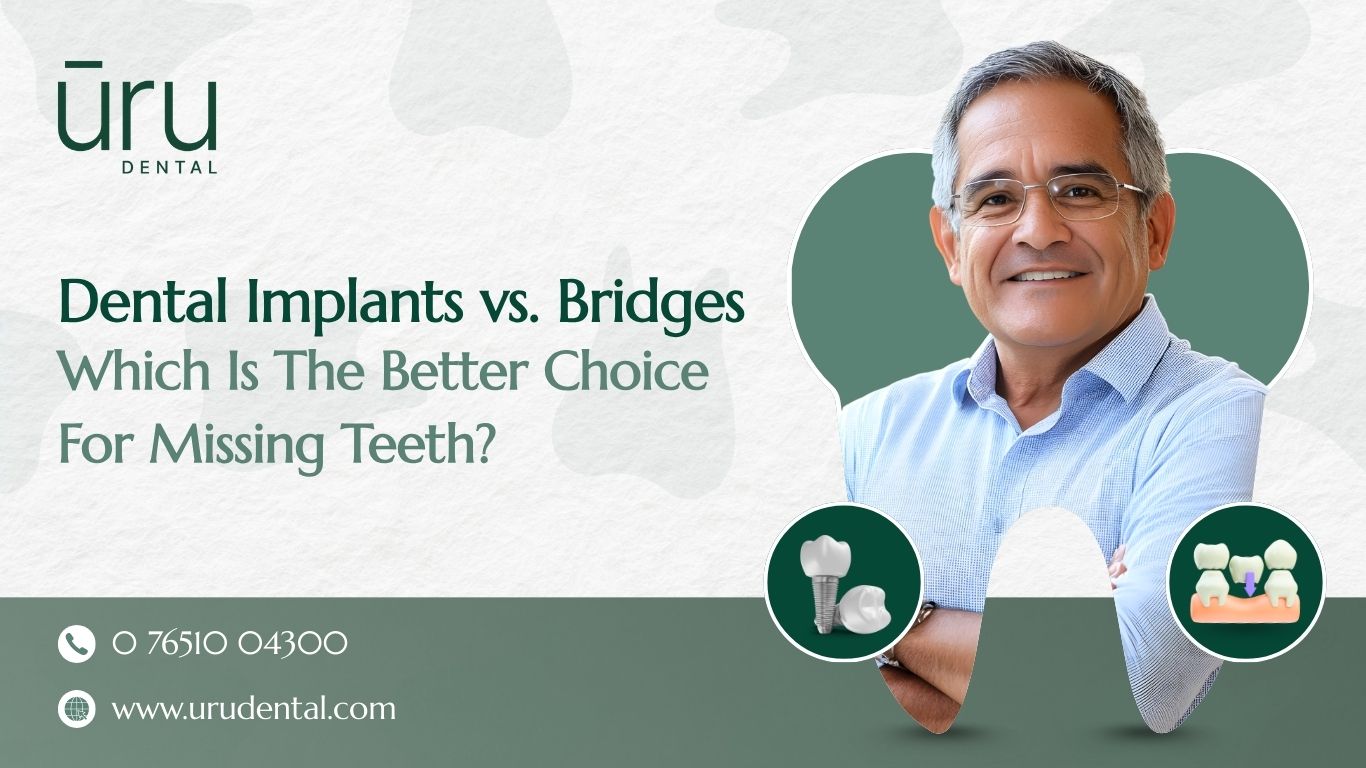
Losing a tooth—whether from injury, decay, or age—can impact more than just your smile. It can affect your bite, speech, self-esteem, and even your overall oral health. Thankfully, modern dentistry offers reliable solutions to restore your missing teeth, with dental implants and bridges being the most common options. But which one is better for you?
Let’s break down the differences, benefits, and considerations of both treatments to help you make an informed decision.
What Are Dental Bridges?
A dental bridge literally bridges the gap left by a missing tooth. It usually consists of one or more artificial teeth (called pontics) held in place by crowns attached to the natural teeth on either side.
Key Features:
- Non-surgical
- Requires grinding down the adjacent healthy teeth to anchor the bridge
- Usually completed in 1–2 visits
When it's ideal:
- You’re missing one or two teeth in a row
- You prefer a faster, less invasive option
- The surrounding teeth already need crowns
What Are Dental Implants?
A dental implant is a titanium post surgically placed into the jawbone, acting as a replacement root. Once the implant fuses with the bone, a crown is placed on top, mimicking a natural tooth in look and function.
Key Features:
- Surgical procedure with healing time
- Doesn’t affect neighboring teeth
- Helps preserve bone and facial structure
When it's ideal:
- You want a long-term, stable solution
- You have healthy gums and good bone density
- You’re missing one or multiple teeth in different parts of the mouth
Comparing the Two: Key Differences
| Feature | Dental Bridge | Dental Implant |
|---|---|---|
| Procedure | Non-surgical, quicker | Surgical, involves healing time |
| Longevity | 8–15 years with proper care | Can last 20+ years or a lifetime |
| Affects Nearby Teeth | Yes, requires reshaping adjacent teeth | No impact on neighboring teeth |
| Bone Health | Doesn’t prevent bone loss | Stimulates jawbone, prevents bone loss |
| Cost | Generally more affordable initially | Higher upfront cost, better long-term value |
| Aesthetics | Looks natural but may not match implants' realism | Very natural look and feel |
Which One Should You Choose?
The decision isn’t one-size-fits-all. Here are some factors to consider:
- Budget: If you're looking for a more cost-effective short-term solution, a bridge might suit your needs. But if you're willing to invest more for a longer-lasting option, an implant is worth considering.
- Oral Health: If your neighboring teeth are healthy, an implant may be better since it preserves their structure. However, if those teeth are damaged and need crowns anyway, a bridge could be efficient.
- Timeline: Bridges can usually be completed in one or two appointments. Implants, on the other hand, require a healing period (3–6 months) before the crown can be placed.
- Bone condition: If you've experienced bone loss in the jaw, you may need a bone graft before getting an implant. Bridges don’t require as much bone density.
Both dental implants and bridges are effective ways to restore missing teeth, and each has its pros and cons. The “better” choice ultimately depends on your oral health, preferences, and long-term goals.
The best way to decide? Talk to your dentist. They’ll evaluate your specific situation—taking into account your bite, bone health, and lifestyle—and recommend the solution that’s right for you.
Don’t let a missing tooth hold you back. Restore your smile and confidence by exploring your options with a trusted dental expert today!